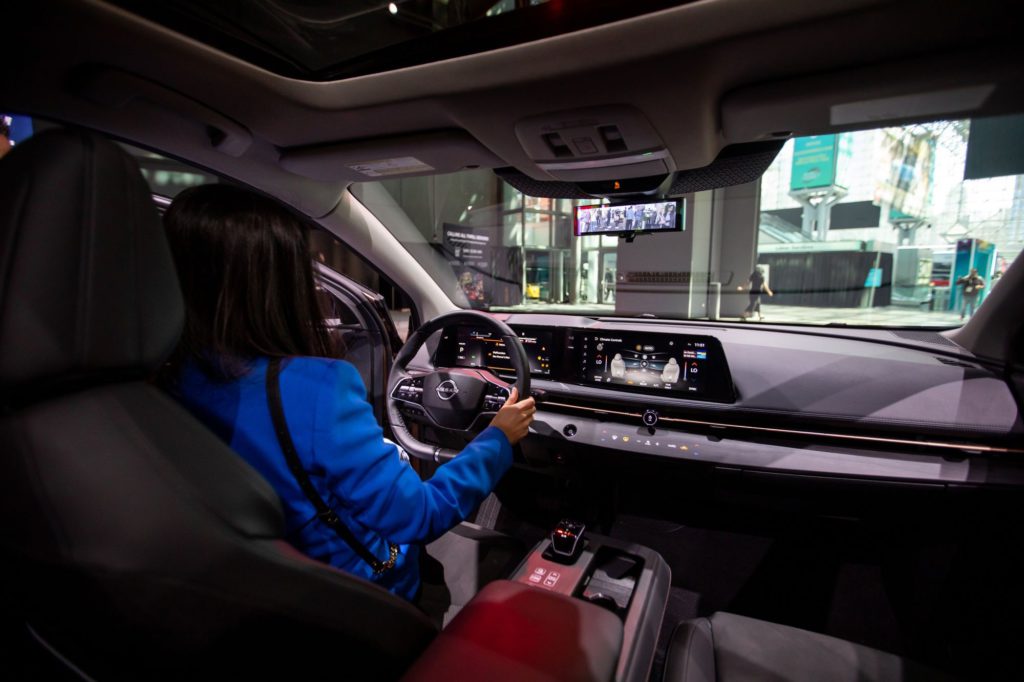(Bloomberg) — When it comes to Nissan Motor Co.’s Ariya, the first thing I have to point out is just how much anticipation has been built around this model. From the day of its unveiling in 2020, auto analysts have highlighted the Ariya as key to Nissan’s long-term performance as it sets out to launch 15 new electric vehicles by fiscal 2030.
Suspense around the sport utility vehicle has been stoked even further over the past year due to a series of delays. The Ariya was originally intended to go on sale in mid-2021. Now, different grades of the vehicle are set for a staggered rollout this year, underscoring the difficulty of churning out high-tech new models amid the industry’s long-standing shortage of semiconductors and other key auto parts.
That late start has put some pressure on the Ariya, because in the months it’s taken Nissan to sort through production issues, the electric SUV segment has become increasingly crowded. And, as a line in a recent Ariya review I spotted reads, “being late to the party only works if you walk in with some top-shelf tequila.”
Ryuichi Yaguchi, an engineer who worked on developing the Ariya, admitted at the test-drive event earlier this month that he has felt some of that heat. But amid rising competition, what Yaguchi says really stands out about the Ariya is its smooth and quiet driving — something he dubs “shinkansen feel,” a reference to Japan’s renowned silent and steady bullet trains.
I definitely experienced this test driving the Ariya a few weeks back. While I knew I was speeding up when my foot was on the pedal, when my colleague took a round behind the wheel, the car’s lack of vibration and constant momentum building meant that as a passenger, I could hardly tell we were accelerating unless I was looking out the window.
Inside, the Ariya also felt very zen. The interior is open and modern with buttons built into the polished timber paneling and Japanese design elements like “kumiko” — woodworking patterns scattered throughout. It’s also pretty high-tech, equipped with Nissan’s latest driver-assistance systems and a responsive voice assistant that wakes up when you say “Hey, Nissan.”
The other interesting backstory to the Ariya — and the source of much of the expectation around the model — is that its maker, Nissan, was actually the first automaker to launch a mass-market EV. That was more than a decade ago with its electric hatchback, the Leaf.
Playing off the tequila analogy, the situation is really more like Nissan arrived early at the EV party and was stuck sitting there for some years until Tesla Inc. came crashing in. For Nissan, the Ariya is a way to show off advantages it associates with being a first-mover in the EV space.
Though the Ariya’s price, size and range place it in a similar category to models such as Ford Motor Co.’s Mustang Mach-E, Nissan says the data it’s gathered from over a decade of Leaf sales have helped it understand how people drive EVs and what issues they face with the new technology.
One example Yaguchi gives is how Nissan has evolved the Ariya’s thermal battery management systems. A cause of frustration in the past was the fact that charges don’t hold well when batteries get too hot, Yaguchi said. For the Ariya, Nissan has developed a system that uses water to heat and cool battery temperature, he said.
As the Ariya begins its broad launch later this year, we’ll see whether the Japanese automaker’s long-standing experience with EVs ultimately translates into a vehicle that is, in consumers’ eyes, top-shelf enough to warrant the wait.
More stories like this are available on bloomberg.com
©2022 Bloomberg L.P.











